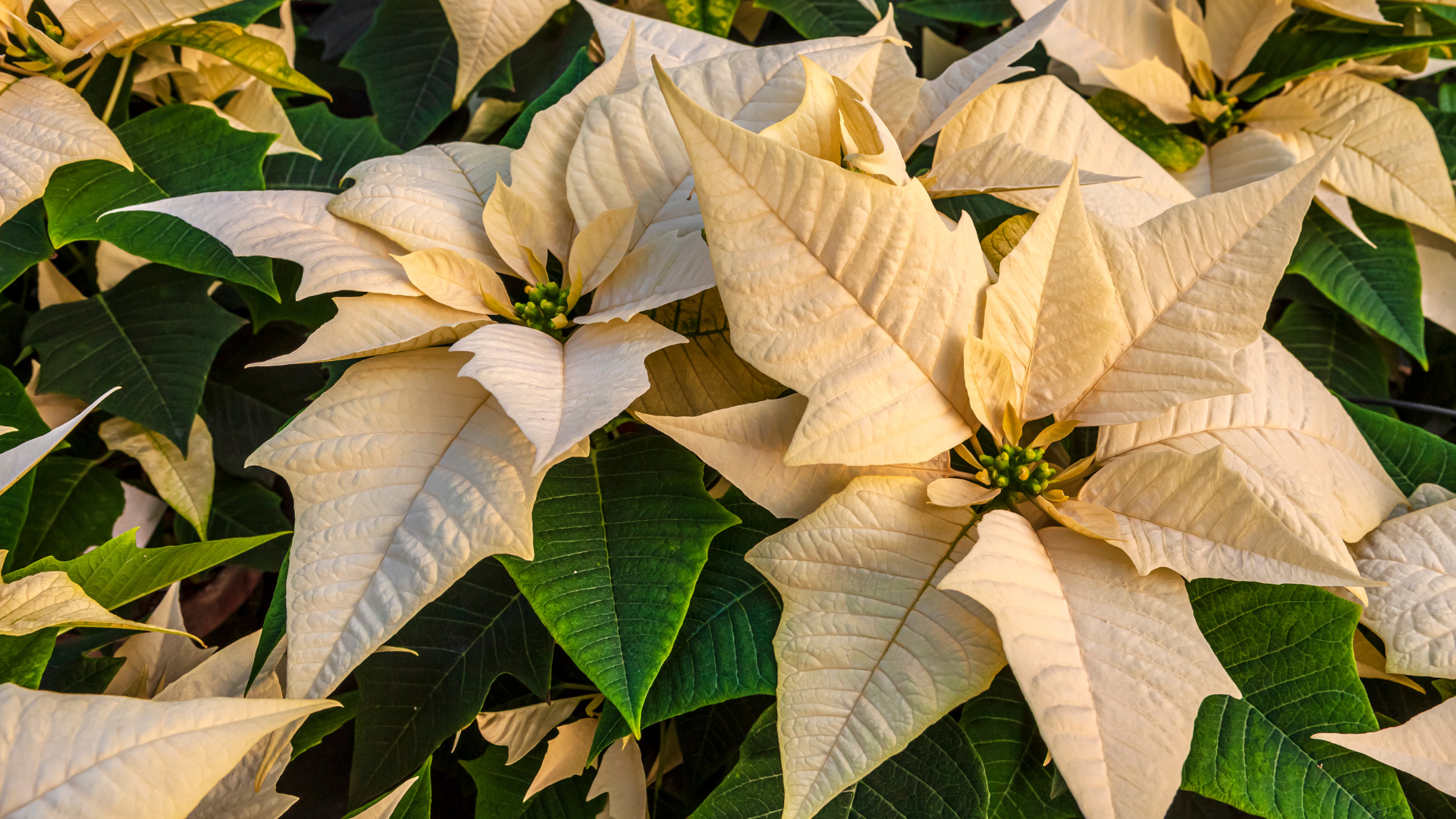Poinsettias are a popular holiday plant that can add a festive touch to any home. However, it can be frustrating to see their leaves start to drop off. This can be very frustrating, especially if you want to enjoy its colorful bracts during the holiday season. But don’t worry, there are some possible causes and solutions for this problem. If you are experiencing this problem, don’t worry, you are not alone. Many people ask, “Why are my poinsettia leaves falling off?” In this article, we will explore the reasons why your poinsettia might be losing its leaves and what you can do to prevent it from happening.
Understanding Poinsettias
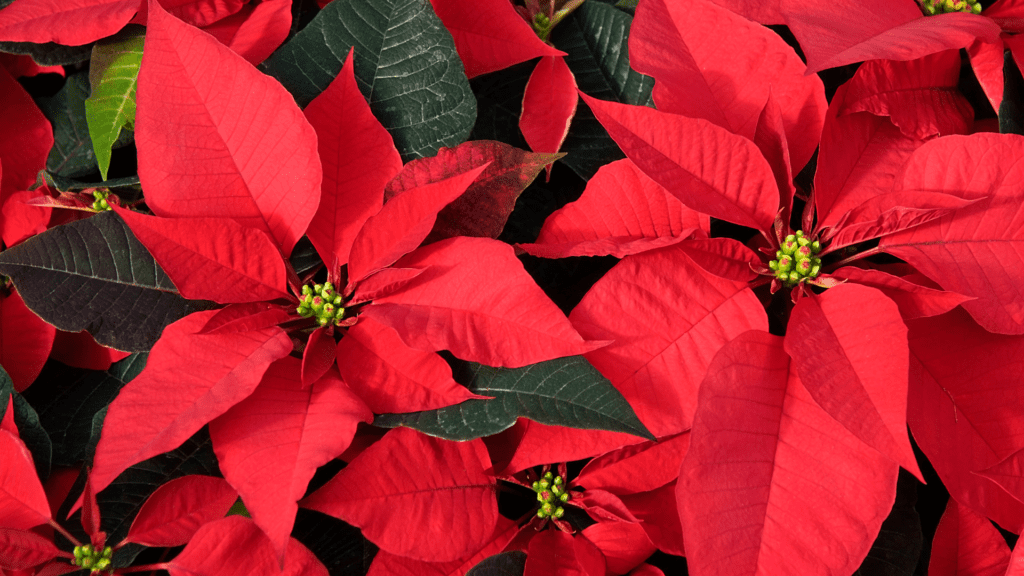
Before we dive into the reasons why poinsettia leaves may be falling off, it is important to understand a little bit about the plant itself. Poinsettias are native to Mexico and are known for their bright red, white, or pink leaves. They are popular holiday plants because they bloom during the winter months, making them a great addition to any holiday decor. Poinsettias are also easy to care for and can thrive indoors with the proper care.
Poinsettia Care

Poinsettias require specific care to keep them healthy and looking their best. Here are some tips for caring for your poinsettia:
Watering:
One of the most common reasons why poinsettia leaves fall off is overwatering. Poinsettias are native to hot and dry forests in Mexico, and they prefer the soil to dry slightly between waterings. If the soil is constantly wet, the roots may rot and the leaves may wilt and drop off due to a lack of oxygen in the soil.
To prevent this, you should water your poinsettia only when the top inch of the soil feels dry to the touch. Water thoroughly until the excess water drains out of the bottom of the pot, and discard any water that collects in the saucer.
You can also use a well-draining potting mix and a pot with drainage holes to avoid waterlogging. Poinsettias should be watered when the soil feels dry to the touch. Do not overwater your plant, as this can cause root rot.
Temperature:
Another possible cause of poinsettia leaf drop is exposure to cold temperatures. Poinsettias are sensitive to temperatures below 55°F (13°C), and even a brief exposure can cause them to lose their leaves.
This can happen if you place your poinsettia near a drafty window or door, or if you transport it from the store without proper protection. To avoid this, you should keep your poinsettia in a warm and bright location, away from cold drafts and heating vents.
You should also wrap your poinsettia in paper or plastic when you bring it home from the store, and avoid leaving it in a cold car. Poinsettias prefer temperatures between 60-70 degrees Fahrenheit. Avoid placing them near drafts or heat sources.
Lighting:
A third possible cause of poinsettia leaf drop is insufficient light. Poinsettias need at least six hours of bright indirect light per day to maintain their health and color. If they don’t get enough light, they may become leggy and drop their lower leaves.
To prevent this, you should place your poinsettia near a sunny window, but not in direct sunlight that can scorch its leaves. You can also rotate your poinsettia every few days to ensure even light exposure. Poinsettias need at least six hours of bright, indirect sunlight each day.
Fertilizing:
Fertilize occasionally. Poinsettias do not need much fertilizer while they are in bloom. You can apply a balanced houseplant fertilizer once a month or every two weeks if you want to keep them after the holiday season. Do not fertilize them when they are dormant or stressed. Fertilize your poinsettia once a month with a balanced fertilizer.
Prune and repot as needed.
If you want to keep your poinsettia for another year, you will need to prune it back and repot it in spring. Cut back all the stems to about six inches from the rim of the pot and use a well-draining peat-based potting mix.
You can also move your poinsettia outdoors in summer, but make sure to protect it from direct sun and pests. Pinch out the tips of the new growth once a month until mid-August to encourage branching.
Also read: Snake Plants: Types, Care, and Benefits
Reasons Why Poinsettia Leaves Fall Off
Now that we understand how to care for a poinsettia let’s explore some of the reasons why its leaves might be falling off.

Environmental Factors
Environmental factors can have a significant impact on the health of your poinsettia. If your plant is exposed to extreme temperatures or drafts, it can cause stress to the plant, leading to leaf loss. Make sure to keep your plant away from any heat sources, such as vents or radiators. Also, avoid placing your plant near doors or windows that may let in cold drafts.
Here are some common environmental factors that can affect your poinsettia:
- Temperature:
Poinsettias prefer temperatures between 60 and 70 degrees Fahrenheit. Exposure to extreme temperatures, either hot or cold, can cause leaf drop. - Light:
Poinsettias need bright, indirect light to thrive. Too much direct sunlight can scorch the leaves, while too little light can cause the leaves to fall off. - Humidity:
Poinsettias prefer a humid environment. Dry air can cause the leaves to dry out and fall off. - Drafts:
Poinsettias do not like drafts or sudden temperature changes. Keep your plant away from drafty windows or doors.
To prevent environmental factors from causing leaf drops, here are some tips:
- Keep your poinsettia in a room with a consistent temperature between 60 and 70 degrees Fahrenheit.
- Place your poinsettia in a bright, indirect light source.
- Increase the humidity around your poinsettia by misting it or placing a tray of water near the plant.
- Keep your poinsettia away from drafty windows or doors.
By providing your poinsettia with a stable and suitable environment, you can help prevent leaf drops and keep your plant healthy and beautiful.
Overwatering

Overwatering is a common problem that can cause poinsettia leaves to fall off. When a plant is overwatered, it can cause the roots to rot, leading to leaf loss. Make sure to only water your poinsettia when the soil feels dry to the touch. Additionally, make sure the pot has proper drainage to avoid water buildup.
Here are some signs that your poinsettia may be overwatered:
- The leaves are yellow or brown and may fall off easily.
- The soil is constantly wet or waterlogged.
- The stem or leaves may become soft and mushy.
Overwatering can lead to root rot, which is a serious condition that can be fatal for your poinsettia. To prevent overwatering, here are some tips for watering your poinsettia:
- Water your poinsettia only when the soil feels dry to the touch.
- Water your poinsettia thoroughly, making sure that water reaches the bottom of the pot.
- Allow excess water to drain away from the pot.
- Do not let your poinsettia sit in standing water.
If your poinsettia is already showing signs of overwatering, you can take steps to help it recover:
- Stop watering your poinsettia immediately.
- Remove your poinsettia from its pot and inspect the roots. If they are brown and mushy, you may need to trim them back to healthy tissue.
- Repot your poinsettia in fresh, well-draining soil.
- Water your poinsettia only when the soil feels dry to the touch.
By following these tips, you can help prevent overwatering and keep your poinsettia healthy and thriving.
Underwatering
Underwatering is another issue that can cause poinsettia leaves to fall off. If a plant is not receiving enough water, it can cause the leaves to wilt and fall off. Make sure to water your plant regularly and keep an eye on the soil moisture levels.
Here are some signs that your poinsettia may be underwatered:
- The soil is dry to the touch.
- The leaves are wilting or drooping.
- The leaves are dry or brittle.
To prevent underwatering, make sure to water your poinsettia regularly and consistently. Here are some tips for watering your poinsettia:
- Water your poinsettia when the soil feels dry to the touch.
- Water your poinsettia thoroughly, making sure that water reaches the bottom of the pot.
- Allow excess water to drain away from the pot.
- Do not let your poinsettia sit in standing water.
If your poinsettia is already showing signs of underwatering, you can help revive it by following these steps:
- Water your poinsettia immediately, making sure to thoroughly saturate the soil.
- Move your poinsettia to a cooler, shadier location for a few days to help it recover.
- Consider misting your poinsettia to increase humidity around the plant.
By providing your poinsettia with the right amount of water and attention, you can help prevent underwatering and keep your plant healthy and thriving.
Pest Infestations

Pests can also be a reason why poinsettia leaves may fall off. Spider mites and whiteflies are common pests that can infest poinsettias. If you notice small webs or white insects on your plant, it is likely a pest infestation. Make sure to isolate the plant and treat it with an appropriate insecticide.
Here are some common pests that can infest poinsettias and how to treat them:
- Whiteflies: These tiny white insects can be found on the underside of leaves and can cause yellowing and wilting of the leaves. To treat whiteflies, you can try spraying the plant with a solution of neem oil and water, or use insecticidal soap.
- Spider mites: These small pests can cause yellowing and discoloration of the leaves and can be difficult to spot due to their small size. To treat spider mites, you can try spraying the plant with a solution of water and dish soap, or use an insecticidal spray.
- Mealybugs: These insects are small, white, and fuzzy and can be found on the stems and leaves of the plant. They can cause leaf drop and stunted growth. To treat mealybugs, you can try wiping the plant with a cotton swab dipped in rubbing alcohol, or use insecticidal soap.
- Aphids: These small insects can cause yellowing and curling of the leaves and can be found on the stems and underside of the leaves. To treat aphids, you can try spraying the plant with a solution of water and dish soap, or use insecticidal spray.
By regularly inspecting your poinsettia for pests and treating infestations promptly, you can help prevent damage to your plant and keep it healthy and beautiful.
Disease
The disease can also be a factor in poinsettia leaf loss. Root rot, stem rot, and powdery mildew are common diseases that can impact poinsettias. If you notice any signs of disease, such as wilting or discoloration, it is important to act quickly to prevent the disease from spreading.
- Botrytis: This fungal disease can cause a gray mold to form on the leaves and stems of the plant. To treat botrytis, remove affected leaves and stems, and provide good air circulation around the plant.
- Pythium root rot: This disease is caused by a soil-borne fungus and can cause the plant to wilt and die. To treat pythium root rot, remove the affected plant from the soil and discard it. Do not reuse the soil.
- Bacterial leaf spot: This disease can cause dark, water-soaked spots on the leaves of the plant. To treat bacterial leaf spot, remove affected leaves and provide good air circulation around the plant.
- Powdery mildew: This fungal disease can cause a white, powdery substance to form on the leaves and stems of the plant. To treat powdery mildew, remove affected leaves and stems, and provide good air circulation around the plant.
By keeping your poinsettia clean and dry, providing good air circulation, and promptly removing any affected leaves or stems, you can help prevent the spread of disease and keep your plant healthy.
Also read: Burgundy rubber tree: the new favorite houseplant, surpassing the Monstera craze.
Preventing Poinsettia Leaf Loss
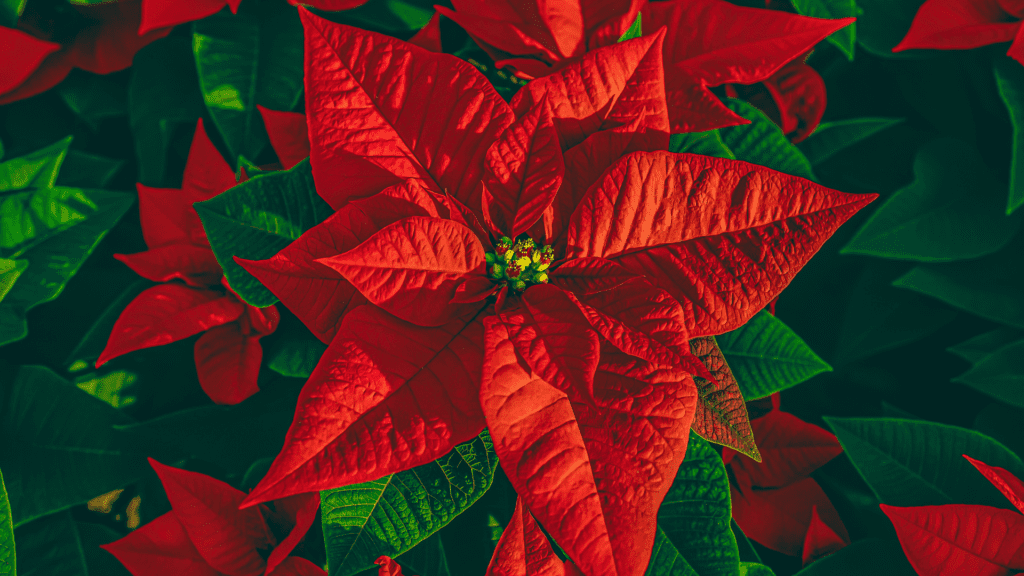
While poinsettia leaf loss can be frustrating, there are steps you can take to prevent it from happening. Here are some tips to keep your poinsettia healthy and looking its best:
- Provide the right environment: Make sure your poinsettia is placed in a spot with the right temperature and lighting. Avoid exposing it to extreme temperatures or drafts.
- Water properly: Water your poinsettia when the soil feels dry to the touch. Make sure the pot has proper drainage to avoid overwatering.
- Inspect for pests: Regularly inspect your poinsettia for any signs of pest infestation, such as small webs or white insects.
- Treat disease promptly: If you notice any signs of disease, such as wilting or discoloration, act quickly to prevent the disease from spreading.
- Keep your poinsettia away from pets and children: Poinsettias can be toxic to pets and children if ingested. Keep your plant out of reach and supervise children and pets around it.
By following these tips, you can help keep your poinsettia healthy and prevent leaf loss.
Conclusion
Poinsettias are beautiful holiday plants that can add a festive touch to any home. However, leaf loss can be a common problem that many people experience. Understanding the reasons why poinsettia leaves may fall off and taking steps to prevent it can help keep your plant healthy and looking its best. With the right care and attention, your poinsettia can be a beautiful addition to your holiday decor for years to come.
FAQs
Can poinsettia diseases spread to other plants?
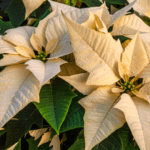
Yes, some poinsettia diseases can spread to other plants, so it’s important to quarantine any affected plants and take steps to prevent the spread of disease.
Can I use chemical fungicides on my poinsettia?

Yes, you can use chemical fungicides on your poinsettia, but be sure to read the label carefully and follow the instructions for use.
Can I prevent poinsettia diseases?

Yes, you can prevent poinsettia diseases by providing the proper care and environment for your plant, such as avoiding overwatering and providing good air circulation.
Are natural disease control methods effective for poinsettias?

Yes, natural disease control methods such as removing affected leaves and providing good air circulation can be effective for controlling diseases on poinsettias.
Can poinsettia diseases be harmful to humans or pets?
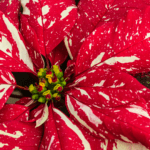
Most poinsettia diseases are not harmful to humans or pets, but it’s important to avoid ingesting any parts of the plant.
